Yajing Li , Lan Xiang and Jianhua Qi *
College of Pharmaceutical Sciences, Zhejiang University, Yu Hang Tang Road 866, Hangzhou 310058, China; 该Email地址已收到反垃圾邮件插件保护。要显示它您需要在浏览器中启用JavaScript。 (Y.L.); 该Email地址已收到反垃圾邮件插件保护。要显示它您需要在浏览器中启用JavaScript。 (L.X.)
* Correspondence: 该Email地址已收到反垃圾邮件插件保护。要显示它您需要在浏览器中启用JavaScript。
Academic Editors: Marina Garcia-Macia and Álvaro F. Fernández
Received: 18 February 2025
Revised: 5 March 2025
Accepted: 5 March 2025
Published: 7 March 2025
Citation: Li, Y.; Xiang, L.; Qi, J. Procyanidin A1 from Peanut Skin Exerts Anti-Aging Effects and Attenuates Senescence via Antioxidative Stress and Autophagy Induction. Antioxidants 2025, 14, 322.
https://doi.org/10.3390/ antiox14030322
Copyright: © 2025 by the authors. Licensee MDPI, Basel, Switzerland.
This article is an open access article distributed under the terms and conditions of the Creative Commons Attribution (CC BY) license
(https://creativecommons.org/ licenses/by/4.0/)
Abstract: The aging population is steadily increasing, with aging and age-related diseases serving as major risk factors for morbidity, mortality, and economic burden. Peanuts, known as the “longevity nut” in China, have been shown to offer various health benefits, with peanut skin extract (PSE) emerging as a key compound of interest. This study investigates the bioactive compound in PSE with anti-aging potential and explores its underlying mechanisms of action. Procyanidin A1 (PC A1) was isolated from PSE, guided by the K6001 yeast replicative lifespan model. PC A1 prolonged the replicative lifespan of yeast and the yeast-like chronological lifespan of PC12 cells. To further confirm its anti-aging effect, cellular senescence, a hallmark of aging, was assessed. In senescent cells induced by etoposide (Etop), PC A1 alleviated senescence by reducing ROS levels, decreasing the percentage of senescent cells, and restoring proliferative capacity. Transcriptomics analysis revealed that PC A1 induced apoptosis, reduced senescence-associated secretory phenotype (SASP) factors, and modulated the phosphatidylinositol 3-kinase (PI3K)/protein kinase B (Akt) signaling pathway. The antioxidative capacity of PC A1 was also evaluated, showing enhanced resistance to oxidative stress in PC12 cells by reducing reactive oxygen species (ROS) and malondialdehyde (MDA) levels and increasing superoxide dismutase (SOD) activity. Moreover, PC A1 induced autophagy, as evidenced by an increase in fluorescence-labeled autophagic compartments and confirmation via Western blot analysis of autophagy-related proteins. In addition, the treatment of an autophagy inhibitor abolished the antioxidative stress and senescence-alleviating effects of PC A1. These findings reveal that PC A1 extended lifespans and alleviated cellular senescence by enhancing oxidative stress resistance and inducing autophagy, positioning it as a promising candidate for further exploration as a geroprotective agent.
Keywords: aging; peanut skin; procyanidin A1; cell senescence; antioxidative stress; autophagy; PI3K/Akt signaling pathway
1. Introduction
Aging is a gradual and irreversible biological process characterized by a progressive loss of physiological integrity, which leads to declining function and increased susceptibility to age-related diseases such as cancer, cardiovascular disorders, and neurodegenerative diseases. With a global population that is living longer and becoming older, age-related diseases have emerged as significant contributors to morbidity, mortality, and social and economic burdens [1]. Despite the inevitability of death, the rate of aging can be modulated, thus making healthy aging attainable. Numerous compounds have demonstrated

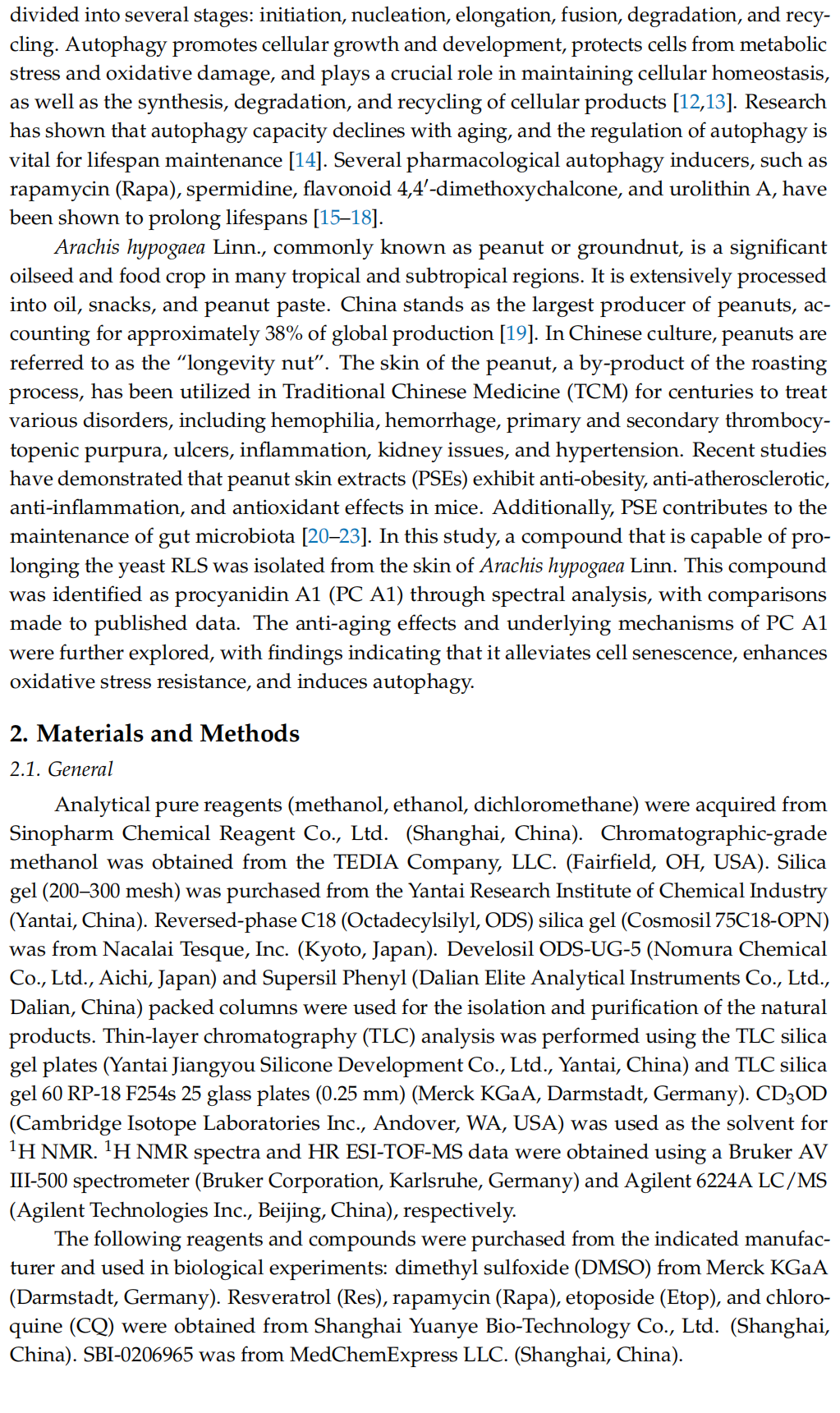
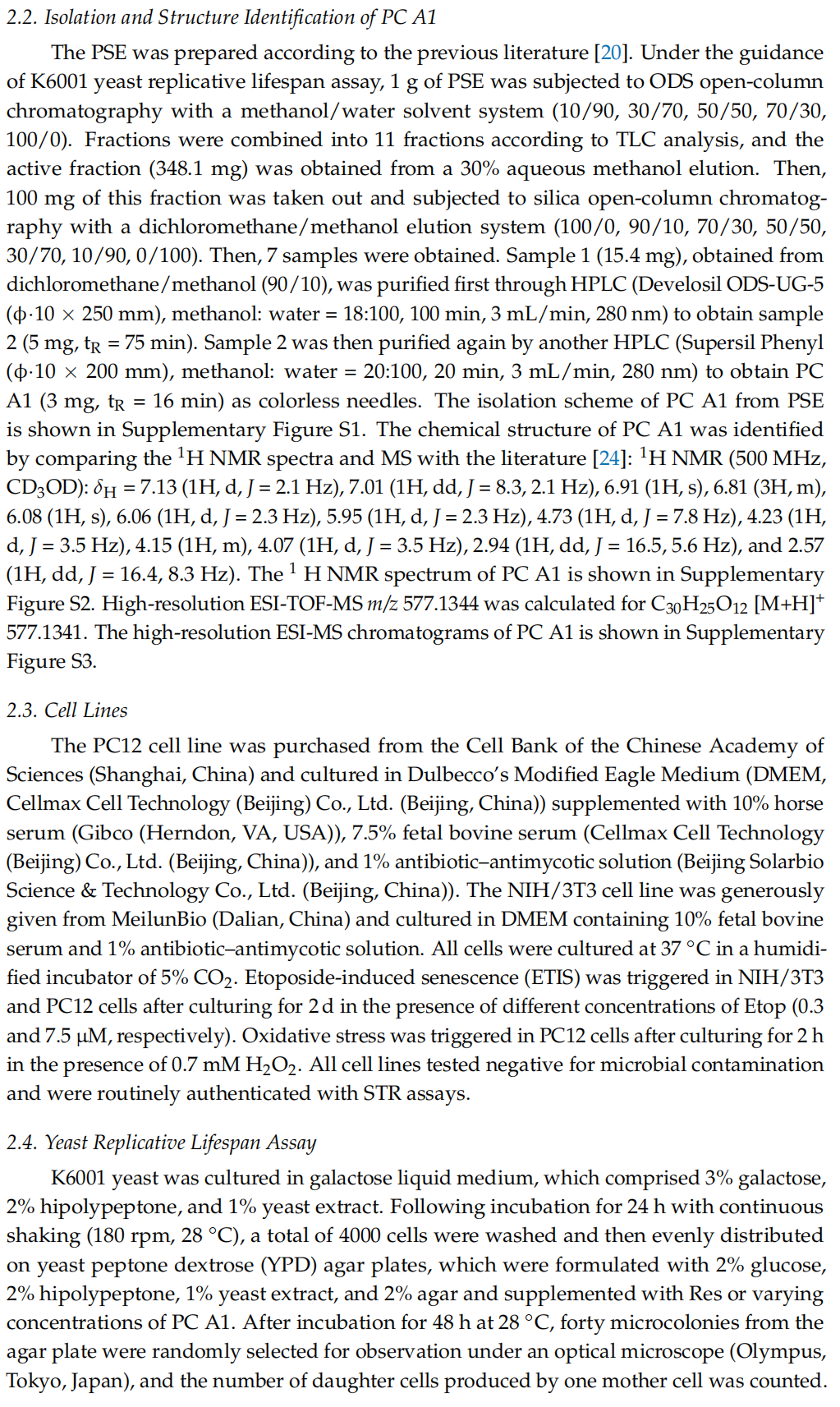



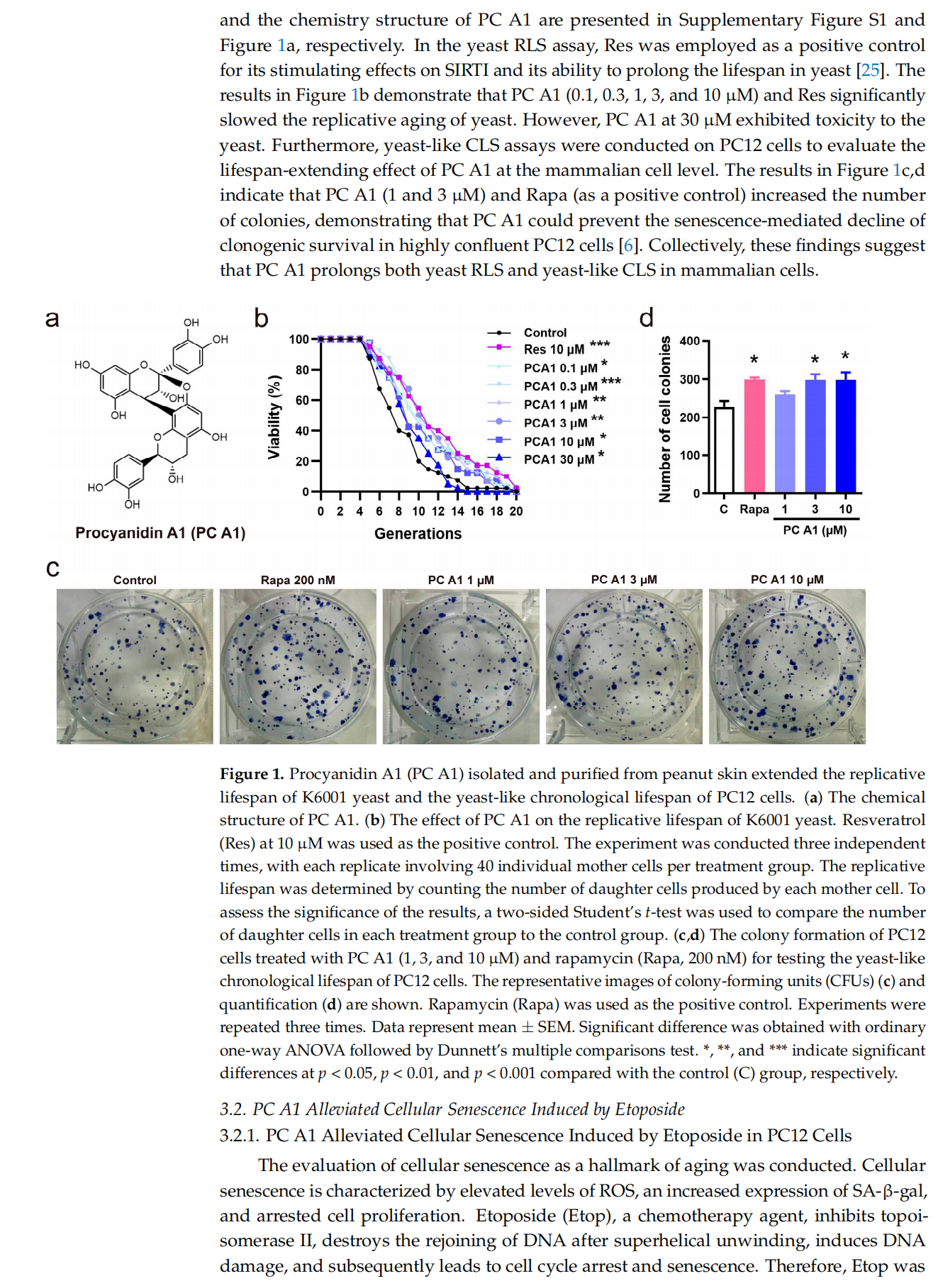
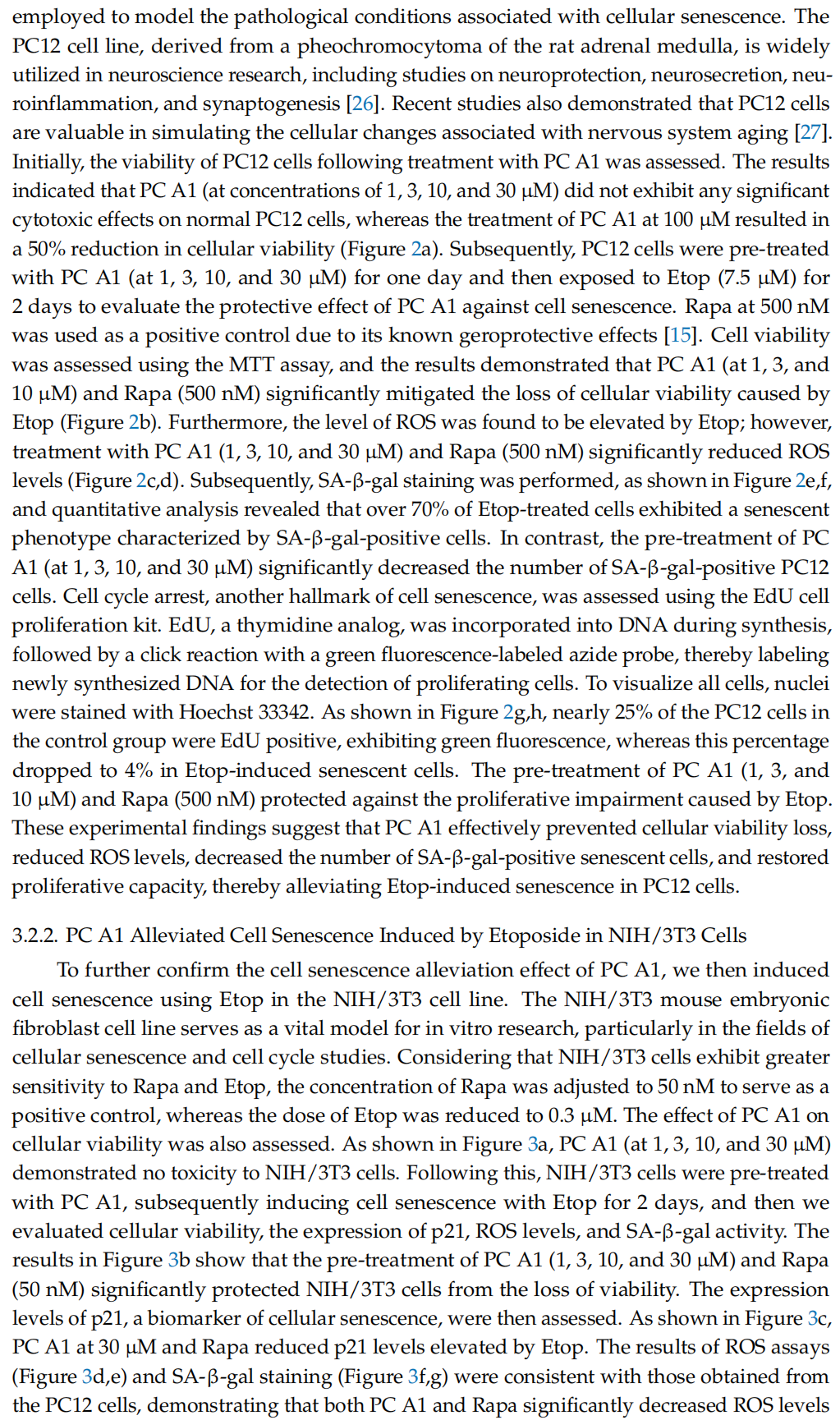

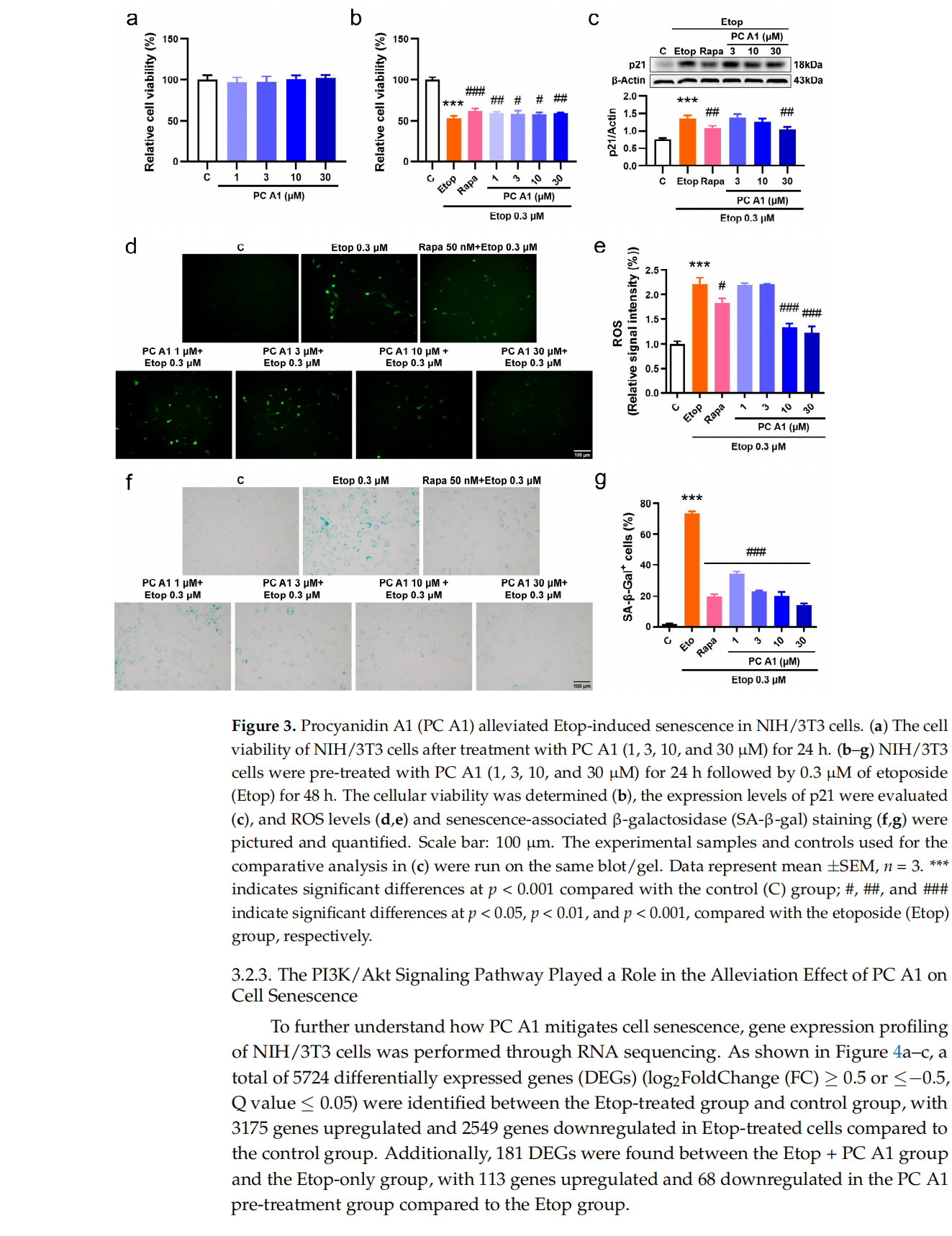
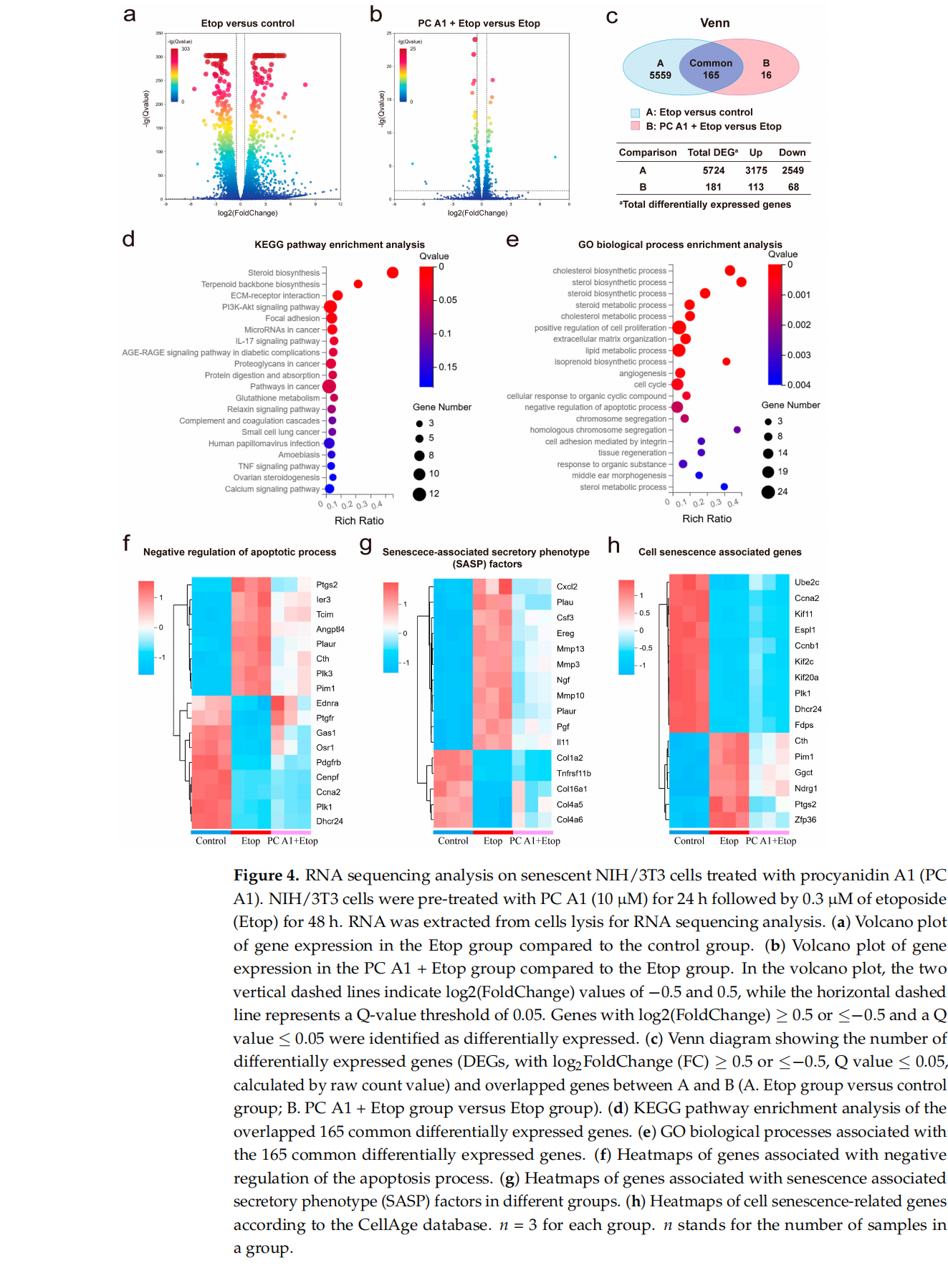


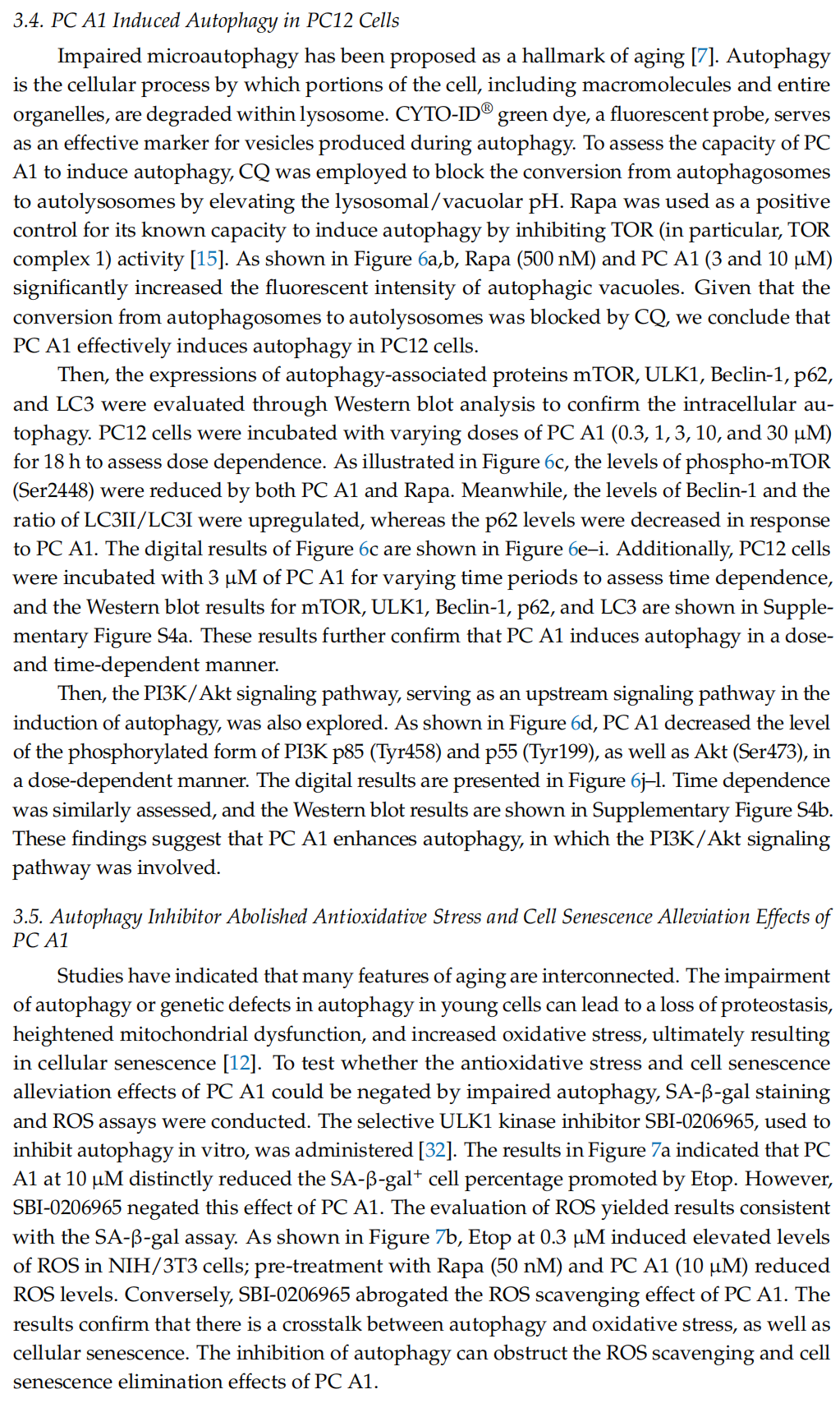
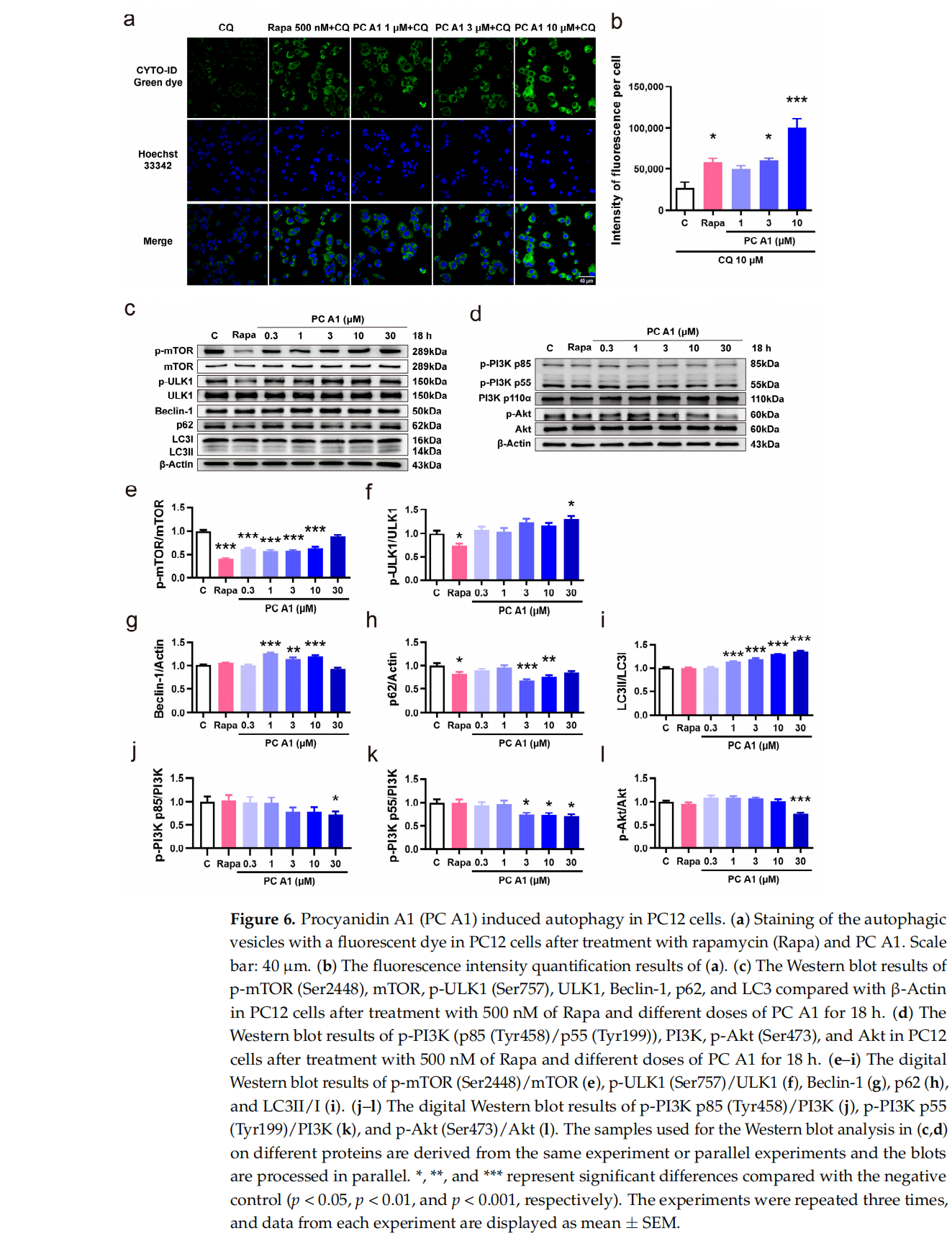

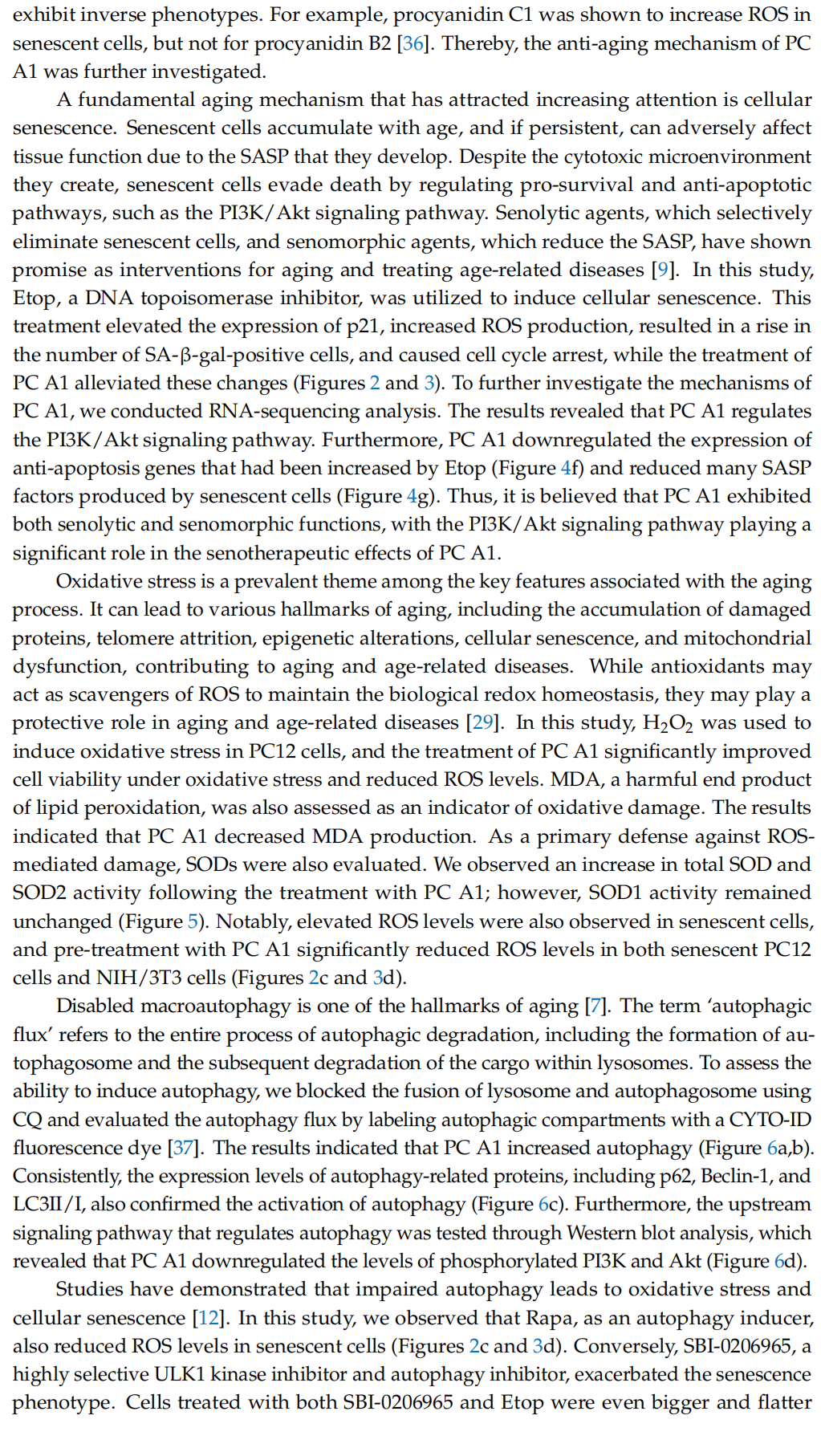


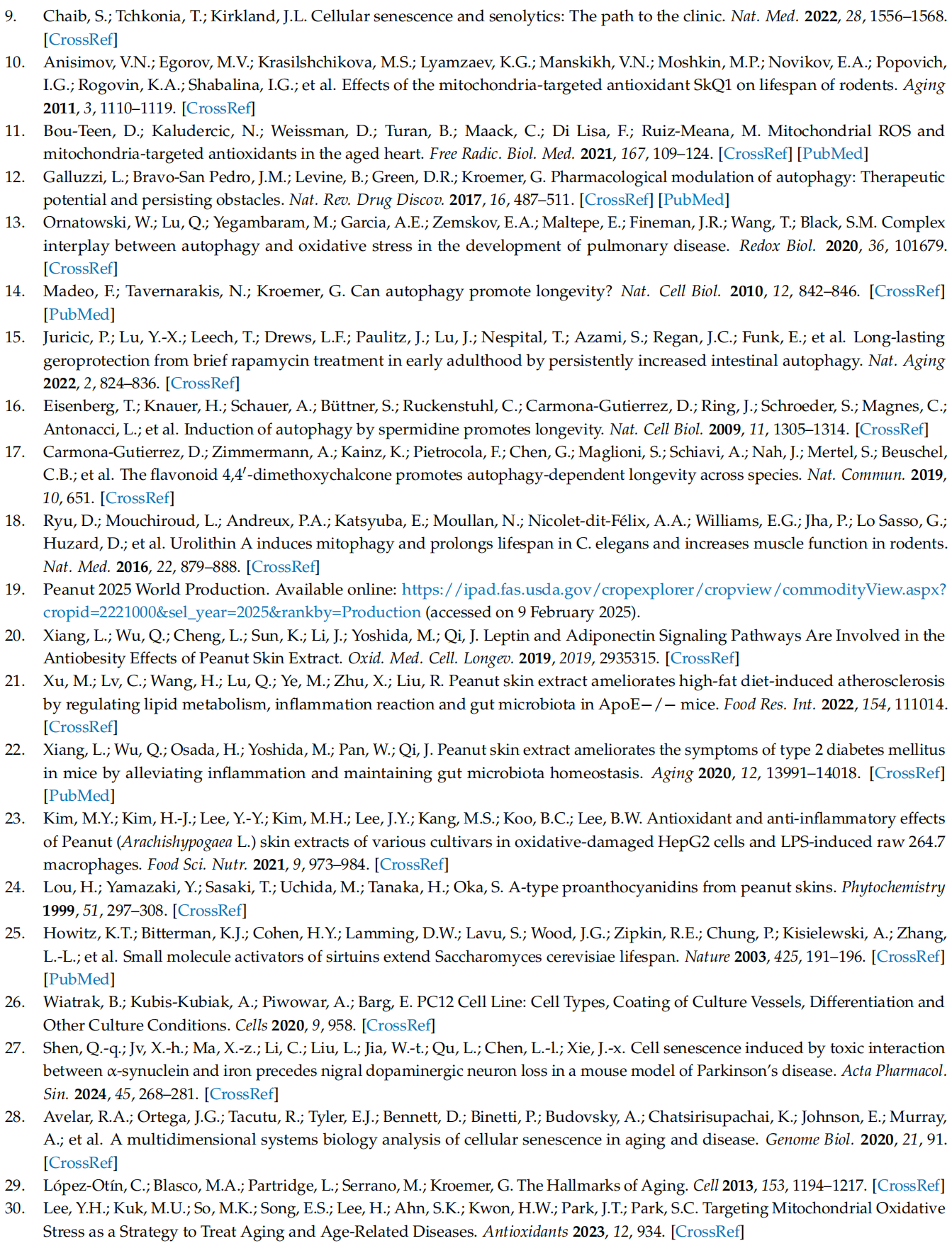
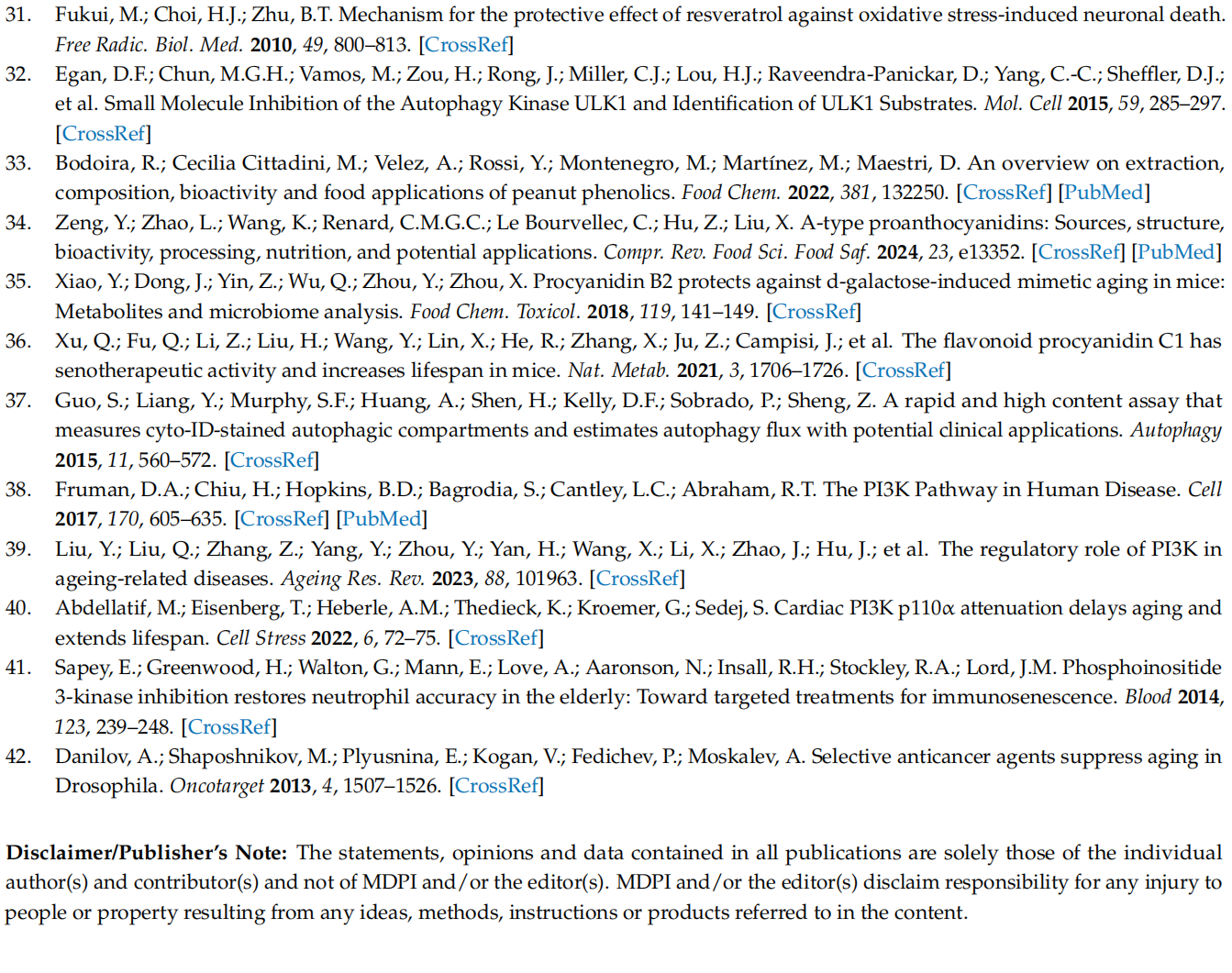
This article is excerpted from the Antioxidants 2025, 14, 322 by Wound World.























